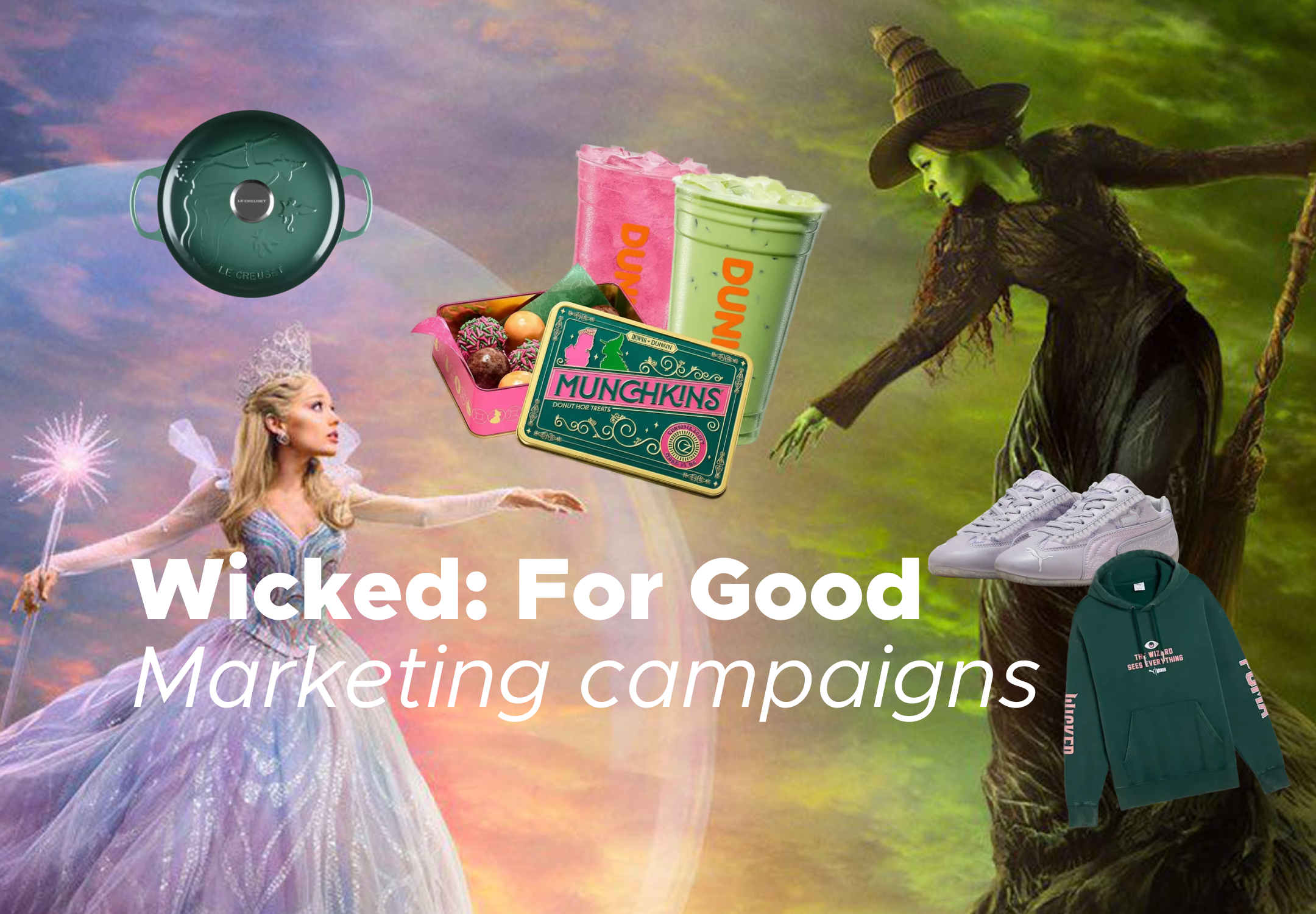Quarter-zips & matchas: How Gen Z men are gaming social codes on TikTok
Quarter-zips and matcha lattes are the new uniform for Gen Z guys who realized that swapping streetwear for prep and coffee for colorful drinks changes how they're perceived. The TikTok trend is half joke, half socio-cultural coding - and it's working.
November 24, 2025

Gen Z men are trading Nike Tech tracksuits for preppy quarter-zips and matcha lattes, and what started as a TikTok joke has turned into something more interesting: a generation openly performing privilege to access spaces and opportunities that weren’t designed for them.
How a meme became a movement
British TikToker @apnaj kicked things off in February with a simple premise: A guy starts wearing a quarter-zip and immediately transforms into someone who only talks about compound interest and ROI. Fast forward to November when @whois.jason’s video exploded: “We don’t do Nike Tech, we don’t do coffee. It’s straight quarter-zips and matchas around here.”
Within weeks, the aesthetic had jumped across platforms. The formula was complete: quarter-zips plus matcha lattes, tote bags, wire-frame glasses, feminist literature, Clairo on vinyl, casual mentions of 401ks. It isn’t just fashion – it is adopting markers of upper-middle-class white culture and “performative masculinity” as a costume.
Costume or cultural code?
This is where the trend connects to the broader “performative male” phenomenon. These guys aren’t just dressing for job interviews or to land a date, they’re learning to code-switch their entire presentation to access spaces, social circles, and opportunities that favor certain “types”. The look becomes cultural currency.
Here’s the irony about it: Nike Tech costs $135, quarter-zips run from as low as maybe $15. But the cheaper option reads as privilege while the expensive streetwear reads as urban, which triggers racial and class biases.
The matcha element adds another layer. Where black coffee codes as traditionally masculine – bitter, no-nonsense, utilitarian – matcha reads as softer, more intentional, aesthetically driven. It’s colorful, it’s Instagram-worthy, it requires preparation and ritual. Historically, these qualities would have been dismissed as feminine or frivolous for men to adopt, but that’s precisely the point. By embracing matcha, tote bags, and feminist literature, these guys are deliberately performing a version of masculinity that rejects traditional “tough guy” signaling in favor of markers that code as educated, progressive, emotionally intelligent. The performative male isn’t trying to prove his masculinity through conventional means, he’s adopting what might be read as feminine-coded choices because those choices signal the class and cultural awareness that opens doors (and Hinge-match opportunities).
It’s not about caffeine or health benefits, it’s about signaling “I’m the type of person who drinks matcha,” which reads as upper-middle-class, aesthetically aware, and safe. Same with the tote bags, the wire-frame glasses, the feminist books. Each element is a signal designed to trigger assumptions about class, education, political values and social belonging.

Why social media is the perfect space for this conversation
There’s a deeper conversation happening here, one that connects to the current political climate where discussions about race, class, and privilege have become increasingly fraught. But TikTok, Instagram, and social media overall offer something traditional discourse doesn’t: The ability to address serious topics through humor and performance without the weight of formal political debate.
This isn’t escapism. It’s Gen Z controlling the narrative on their terms, having them through memes, performative contests, and viral videos. The format lets them say what needs to be said without the defensiveness that often shuts down conversations about racial coding and privilege. By making it ironic and self-aware, they can discuss biases and social hierarchies in a way that’s accessible, shareable, and less likely to trigger the usual resistance. The humor disarms, but the message lands. They’re not asking permission to talk about how society codes race and class through aesthetics, they’re just doing it, packaging the critique as entertainment while still making the point clear.
Social media gives Gen Z the tools to shape their own discourse rather than waiting for institutions or older generations to validate their perspectives. The quarter-zip movement is their way of saying: we see the game, we understand the rules, we’re going to play it while simultaneously calling it out, and we’re doing it in our space, on our platforms, in our language.
Gen Z male unemployment sits at 9.1%, entry-level postings have dropped 29%, and competition is fierce. In this environment, gaming biases becomes survival strategy. If wearing a quarter-zip and carrying a tote bag makes people assume you’re safe, educated, from a good background, then that’s leverage. The joke is that it works, that these superficial signals actually do shift how people perceive and treat you. The quarter-zip movement makes that navigation visible and performative through satire.
Brand impact and strategic opportunities
Retailers are responding by repositioning quarter-zips as aspirational pieces and moving them to prominent displays. Brooks Brothers, LL Bean and Banana Republic are suddenly relevant to Gen Z. Matcha brands report 30-40% sales increases in Gen Z markets.
For Nike, this creates interesting territory. Nike Tech has been urban streetwear royalty, but now it’s explicitly what you leave behind when you want to be read a certain way. Here’s where Nike has real opportunity.
The first play: challenge the premise itself. Show a hero athlete wearing Nike Tech in conservative environments – boardrooms, investment meetings, upscale venues – underlining that this is their uniform as an athlete, and it belongs in those spaces just as much as any quarter-zip. The message: you don’t need to change who you are to enter these spaces, bring your aesthetic with you. This positions Nike Tech not as something to outgrow but as legitimate across all contexts, challenging the bias rather than accommodating it.
The easier, more commercial play: highlight the Nike Tech Fleece half-zip. It already exists in their product line and literally bridges both aesthetics. Market it explicitly as the piece for those who want access to both worlds without choosing – positioning Nike as understanding code-switching while providing the product solution.
Both approaches acknowledge the reality of social coding without suggesting Nike Tech wearers need to fully abandon their aesthetic. The first is bolder and more culturally challenging, the second is commercially safer while still being culturally aware.
What this trend really reveals
The quarter-zip trend isn’t about workplace or date dress codes, it’s about social currency.
Gen Z is openly discussing what previous generations did quietly: certain aesthetic choices grant access to spaces, opportunities, and benefit-of-the-doubt treatment that other choices don’t. Those choices break down along racial and class lines, and the associations are arbitrary but powerful.
By making the performance visible and ironic, Gen Z is both gaming the system and critiquing it. They’re saying “yes, I know this is performative, yes, I know these signals are constructed, yes, I’m still going to use them because they work.” The self-awareness doesn’t change the reality that biases exist and can be manipulated.
For brands, this creates a choice: reinforce the associations, provide tools for code-switching, or challenge the premise. Most will choose the middle path because it’s commercially safe while acknowledging reality.
The quarter-zip trend will fade, but what it represents persists. Gen Z is navigating a world where presentation matters more than they’d like, where biases based on race and class still determine opportunities, where learning to code-switch is a survival skill. They’re just doing it more openly than previous generations, turning the performance into content and the strategy into satire, controlling their own narrative in spaces they built for themselves.
Latest News ☕

The 2026 social commerce revolution: Turning followers into customers
November 22, 2025
Social media isn't just where people scroll anymore - it's where they shop. In 2026, the b...

How ‘Wicked: For Good’ transformed brand collaboration
November 20, 2025
Universal Pictures' Wicked franchise didn't just break box office records globally - it re...

Creator economy 2026: The industries with the biggest growth potential
November 19, 2025
The creator economy is projected to nearly double from $250 billion to $500 billion by 202...


